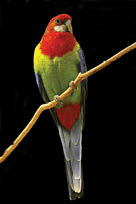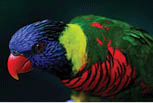
 As you travel around the world, one of the things you will notice is that on all continents there are birds with dazzling color. The colors serve many purposes for the birds — camouflage, to attract mates, dominance symbols, and the like. How they produce that color has been a mystery that is still being unraveled by scientists. Richard Prum, an ornithologist at Yale, has been studying this issue starting with the cotingas, a beautiful blue-colored bird in Central and South America.
As you travel around the world, one of the things you will notice is that on all continents there are birds with dazzling color. The colors serve many purposes for the birds — camouflage, to attract mates, dominance symbols, and the like. How they produce that color has been a mystery that is still being unraveled by scientists. Richard Prum, an ornithologist at Yale, has been studying this issue starting with the cotingas, a beautiful blue-colored bird in Central and South America.
Prum has discovered that as feathers grow, a material called keratin separates from water in the cells inside the feathers. The cells die and the water dries out leaving air pockets in the keratin so the structure is like a sponge or a box of spaghetti. In the case of the cotingas the red and green wavelengths are absorbed by the keratin leaving blue light to be reflected from the feather. Scientists refer to this as structural color because it is not pigment that is reflecting, but light interacting with the feather’s structure.
 Prum refers to all of this as an exceptional feat of engineering, and he dismisses any practical reason for the color but suggests that “It’s really about beauty.” Prum is teaching a class at Yale titled “The Evolution of Beauty.” While the mechanism for the production of beauty is an interesting subject, we would suggest that beauty is an artistic term that requires a sentient being. It reaches beyond survival and lies within the spiritual dimension of humans created in God’s image, with creative ability in art, music, and worship. Appreciation of beautiful color is a part of that creative ability. Source: Smithsonian, March 2012, page 26.
Prum refers to all of this as an exceptional feat of engineering, and he dismisses any practical reason for the color but suggests that “It’s really about beauty.” Prum is teaching a class at Yale titled “The Evolution of Beauty.” While the mechanism for the production of beauty is an interesting subject, we would suggest that beauty is an artistic term that requires a sentient being. It reaches beyond survival and lies within the spiritual dimension of humans created in God’s image, with creative ability in art, music, and worship. Appreciation of beautiful color is a part of that creative ability. Source: Smithsonian, March 2012, page 26.
